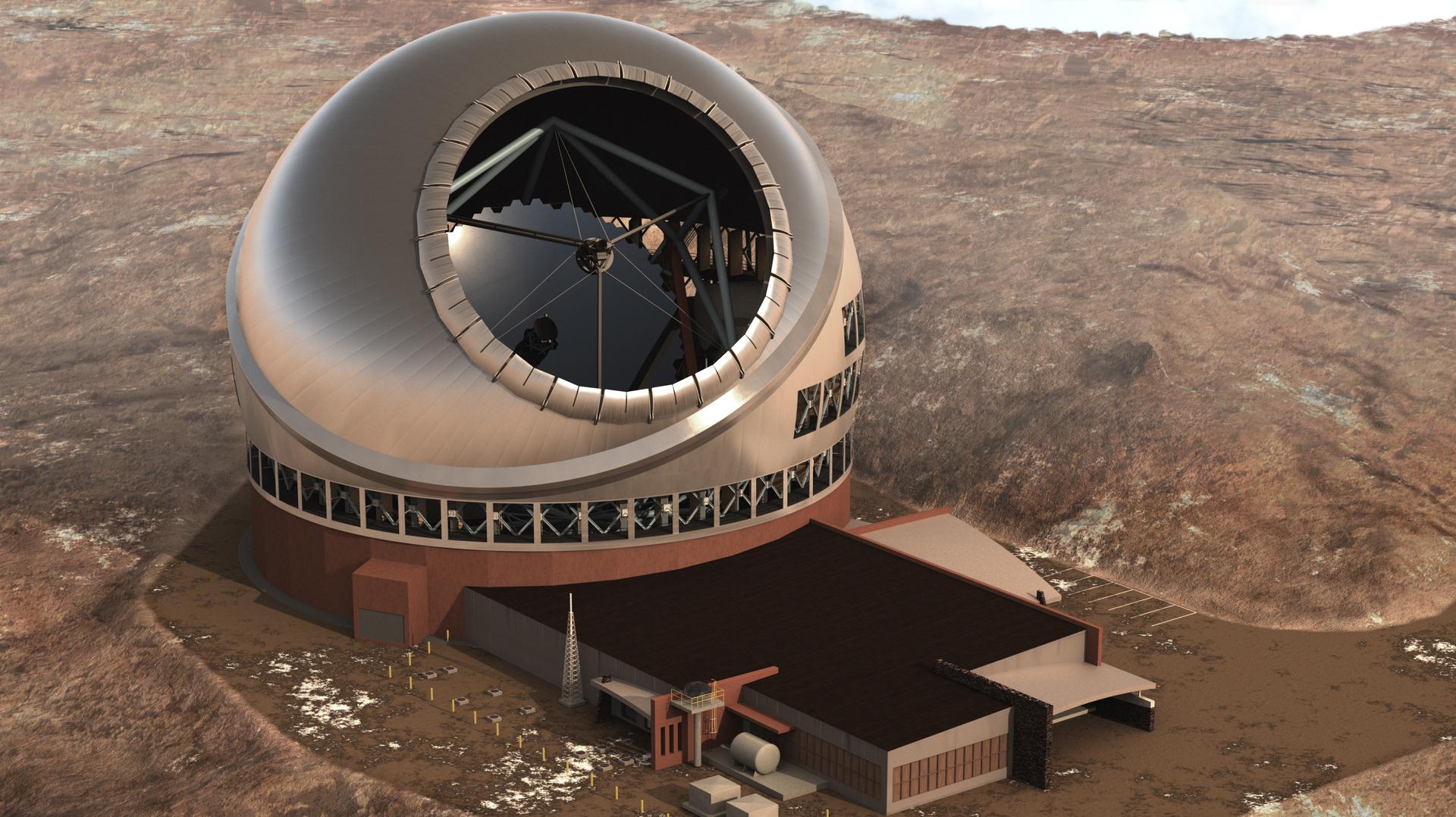Finding an Earthly home for the Thirty Meter Telescope
This is an artist’s rendering of the TMT telescope.
Named for the diameter of its mirror, the Thirty Meter Telescope (TMT, for short) will some day see 10 to 100 times farther in the sky than existing telescopes — far enough, scientists hope, to glimpse exoplanets and some of the oldest objects in the universe.
The powerful telescope is being developed as a partnership between the United States, Canada, Japan, China and India. But for the moment, it’s still just a twinkle in the eyes of international astronomers — because as it turns out, finding an Earthly home for TMT has been harder than anyone counted on.
Originally, the telescope was to be built on Hawaii’s Mauna Kea, but construction halted in 2015 after Native Hawaiians sued — the volcano is one of the most sacred spots in the Hawaiian Islands.
The TMT team has a backup location in Spain’s Canary Islands, and in mid-May, a group of Canadian scientists issued a report examining the costs of switching sites. As Space.com senior writer Michael Wall explains, the substitute spot isn’t a clear win, either — it’s considerably lower in elevation than Mauna Kea.
“It's about 6,000 feet lower, actually,” he says, “which means that if you build the telescope there it has to peer up through a lot more atmosphere, and that makes it a lot harder to actually see into space.”
If the telescope is built in the Canary Islands, scientists could install adaptive optics to lessen the blurring caused by all that extra atmosphere, he explains. But even then, success isn’t a sure thing: “It's still possible that … won't be able to totally counteract the atmospheric effects,” he says. “There's a reason why the Hawaii place was a scientifically preferred site in the first place, and so they would still hope to build it there.”
Given the telescope’s requirements, the dry, high elevations of the Chilean Andes would be another option — but two gigantic telescopes, the European Extremely Large Telescope and the Giant Magellan Telescope, are already being built in the area.
“What they’d really like is [to] have one in the Northern Hemisphere, which will be able to do different parts of the sky and therefore different objects,” Wall says, “and also link up with a bunch of the Northern Hemisphere telescopes, so that they can perform similar studies on similar parts of the sky.”
“They don't want to put all of the giant megascopes on Earth in the same little patch of Southern Hemisphere to look at the same part of the sky.”
Given the variables, it could be a while yet before the telescope finds its footing. “We're expecting to hear a new ruling about whether [Mauna Kea] construction can actually go forward in the next couple of months,” Wall says. “But nobody really knows, and nobody knows if there will be a challenge after that judgment is handed down.”
Soon, however, the Thirty Meter Telescope will simply need a home — wherever that may be. “They would ideally like to start construction by spring of 2018,” Wall says.
This article is based on an interview that aired on PRI's Science Friday with Ira Flatow.
Our coverage reaches millions each week, but only a small fraction of listeners contribute to sustain our program. We still need 224 more people to donate $100 or $10/monthly to unlock our $67,000 match. Will you help us get there today?
